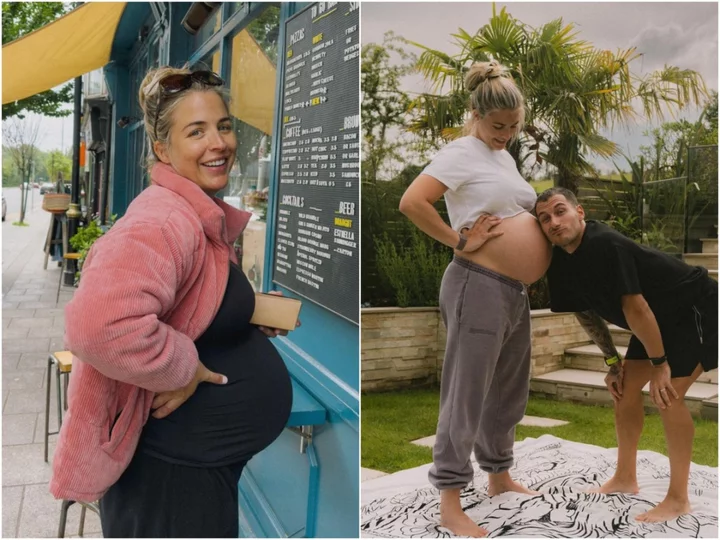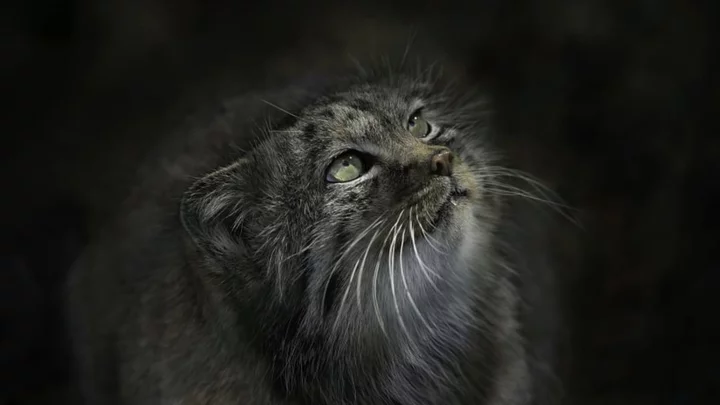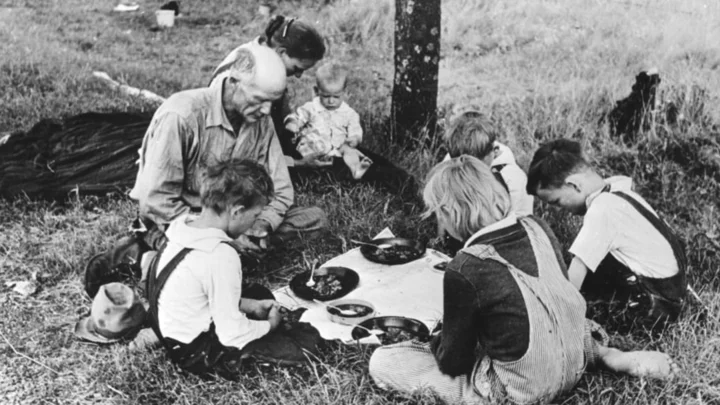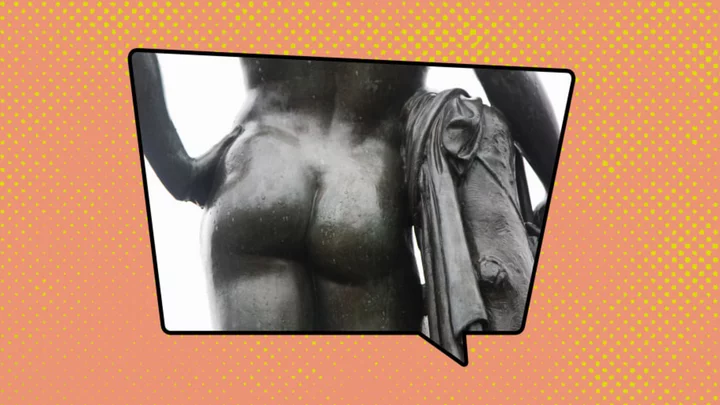A melting pot of social image and designer conception: A look inside New York Fashion Week 2023
I can’t lie. I felt famous during New York Fashion Week. With my focus oscillating between Google Maps and the cobblestone streets of Tribeca, I had no time to stop and think about the scene I would be approaching. The thing with runway shows is they never start on time. Who shows up early these days anyway? For me, someone constantly late but willingly accepting every opportunity, NYFW’s schedule worked to my advantage. Still, inklings of doubt mixed with the rush of not knowing how late would be too late – leaving me with little room for mental preparation. In the case of the Brandon Maxwell show, I anticipated an intimate setting. I was told the guests were close friends, family, and a few high-profile fashion moguls who were asked to refrain from using recording devices during the presentation. It was a trusted circle of less than one hundred. I knew there’d be paparazzi outside impatiently awaiting the elite attendees. However, I didn’t foresee the vast amount of turned heads and focused cameras crowding the corner of Walker Street and Cortlandt Alley, all readily directed at me. Suddenly, I was someone to be noticed. Through the white flashes and crisp calls for attention, I approached the threshold of the Andrew Kreps Gallery. I presented myself to be checked off a list of people deemed special enough to see inside. Camera personnel and event staff had no clue who I was or why I was there – the irony. I wasn’t Julia Fox, Anna Wintour, or Blake Lively-level distinguished or expected. But I, Kaleigh Werner, was presumed worthy of being photographed and granted access based on proximity, invitation, and seating. It was thrilling. I felt as though I’d made it. In the literal form, yes, I’d arrived at my destination and found my chair. But metaphorically, I was on the cusp of something sensational that surpassed the rush of being realised through an entirely new lens. As a reporter, someone invited to review these presentations, it’s easier to block out the A-list noise. My attention remains locked on the intricacies of each collection, and figuring out how they mirror the thoughts of a designer. Whether sitting in the front or standing in the back, I’m concentrating on how a designer’s societal impression can be contextualised in fashion, while still adhering to the temperature regulations of the season. I’m in a gallery or a museum to perceive art, not at a red carpet event. I’m not being dressed by the brand. I’m not worried about how I look. The runway demands my attention. So, my gaze is directed there. This year I attended three shows: ADEAM, Atelier Ndigo, and of course, Brandon Maxwell. For ADEAM’s spring/summer 2024 show, hosted inside a warehouse on the west side of Manhattan, creative director and CEO Hanako Maeda effectively fused her longtime love for the ballet with her desire to “juxtapose the performance art as a sport”. “I think the collection combines the romanticism and couture-like craftsmanship that you see in ballet costumes with a more modern, sporty mood. I also added a touch of rock ‘n’ roll edge with the accessories,” Maeda told The Independent. Through tulle skirts, corsetry, ribbon, sheer Ponte, mixed media knits, and tailoring, Maeda - who designed the costumes for New York City Ballet’s Fall Fashion Gala in 2015 - reconfigured ballerinas to be models replicating a facile silhouette on the street. By using the specific material and intentional shape often associated with ballet, she harnessed the “athletic prowess” a performance artist displays and weaved it into everyday wear. Atelier Ndigo played with personal inspiration by utilising vibrant colours, textured fabrics, and structured pieces. From a bumpy white two-piece to balloon short sleeves, brand founder Waina Chancy once again proved to be an architect in dainty yet outspoken fashion. The white-washed walls of Spring Studios, complete with a backdrop of block brand lettering, only made every shade of red, purple, pink, and orange louder. Back at Andrew Kreps Gallery, Brandon Maxwell strayed from the eccentricity of his past spring collections to construct an ethereal response to the power of love. To him, that response is seen through sheer and natural beauty, along with coding that only added a breath of elegance. On the catwalk, gusts of chiffon, leather, knits, and denim blew past the few guests who sat in the studio. With flourescent lights and white ambiance, it felt as thought Maxwell had called upon angels to introduce a new wave of purity and innonence. Yet, the see-through materials mixed with belted pieces reminded us of the allure of form. The Brandon Maxwell spring/summer 2024 runway presentation wasn’t just the launch of a new line, but a visceral discussion on freedom and restraint - being simutaneously aware of both independence and determinism. From the distant eye, minimalism was triumphant. But upon closer look, the details were unveiled. Spliced sleeves turned biker-esque jackets and blazers into capes; sheer layers over and under long, fitted jackets transformed signature workwear into chic formalwear; and ripped, patchwork denim paired with slouched sweaters or unbuttoned button-ups brought an air of luxury to street style. As I exited down the steps to return to the reality of a typical work day, I stuck around to see who I could spot leaving the venue. NYFW has assumed a certain social stigma and media blitz. As much as it’s known for the inspired collections crafted by the minds of upcoming and distinguished talents, the seven-day affair has been hit with criticism, as more participants and curious observers are blinded by its social scene. After an animal rights advocate and PETA supporter stormed Coach’s spring/summer 2024 runway to protest the brand’s use of leather, discussion errupted around influencers increased presence at NYFW. Famed creators like Taylor Hawkins have been quick to point out how “dead” some events can get, due to the amount of brands that prioritise seating and dressing social media stars based on their online presence. Kelly Cutrone, best-selling author and CEO of People’s Revolution, echoed these sentiments in conversation with Dear Media during NYFW in February. “It’s just like, because you’re good at marketing yourself on the internet doesn’t make you a fashion expert,” she said about influencer being invited to shows. “Don’t pretend that just ‘cause you come here for a week that you’re in the fashion business.” For industry representatives - who are devoted to furthering the conversations that are evoked in fashion collections - their experiences are entirely separate from those who are invited to sit and make content about what they saw. These professionals are behind-the-scenes, speaking with the creative directors and producing copy to candidly honour their own work. “You know what I really don’t get, and what I don’t have much time for anymore. The fact that so much of the fashion content around the show that I see, especially on Instagram with these influencers, it’s really all about them,” fashion journalist Mosha Lundstrom Halbert said on her podcast, NEWSFASH. “It’s all about the fact that they got to go to fashion week - okay, cool. The fact that they’re being dressed by the designer - great, I’m happy for you,” she went on. “No editors get dressed by the designers, that’s really just influencers. And the fact that they’re going to show you where they sat and who they’re friends with...” But, there’s an advantage to having paparazzi feed off the unpredictable swarm of A-listers and influencers, and an obvious benefit to designers who decide to fill their front row with them. At ADEAM, Lana Condor, Elsa Husk, Poppy Delevigne, Harry Shum Jr, and Anna Cathcart were among the photographed VIPs. Meanwhile, Brandon Maxwell hosted Henrik Morten Lischk, Lisa Aiken, Eva Chen, Camila Alves McConaughey, Kat Collings, and Alex Badia. From a brand perspective, visibility is everything. In order for clothes to sell, the pieces need to be represented and observed by the right people – the “Emily Ratajkowskis” who generate buzz, or the social media influencers who inspire fads. It’s worth noting that, even though the production, styling, and individual garments speak volumes to the attractiveness of a collection, desire is often born from those who are adored and admired. Designers will develop their seasonal lines in tandem with a muse or inspired concept, like ADEAM’s spring/summer 2024 being motivated by the ballet or Brandon Maxwell’s being an answer to the impasse of freedom and restraint. Then there was Dolce and Gabbana’s famed spring/summer 2023 show curated by Kim Kardashian, after both Domenico and Stefano were galvanised by the reality star’s “it girl” essence. High fashion runway can be viewed as a melting pot of celebrity image and designer conception. While the relationship between famed figures and name brands is pertinent to Fashion Week criticisms, the focus shouldn’t be on celebrity sightings or social climbings. Although I observed a clear presence of exclusivity hovering over runway presentations and after-parties, I found the purpose is not to be seen but to step inside the minds of imaginative designers and celebrate the execution of their visions. Read More London Fashion Week 2023: All the highlights from day two British Vogue appoints Chioma Nnadi as Edward Enninful’s successor London Fashion Week: Jourdan Dunn walks in emotional Richard Quinn show
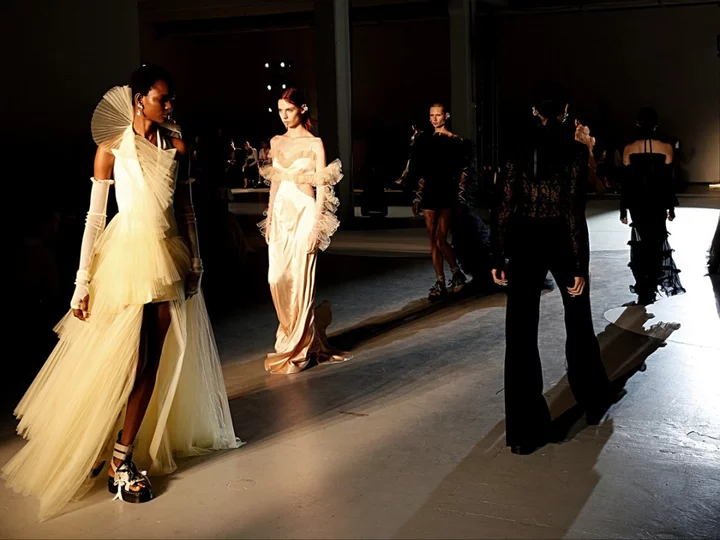
I can’t lie. I felt famous during New York Fashion Week.
With my focus oscillating between Google Maps and the cobblestone streets of Tribeca, I had no time to stop and think about the scene I would be approaching.
The thing with runway shows is they never start on time. Who shows up early these days anyway? For me, someone constantly late but willingly accepting every opportunity, NYFW’s schedule worked to my advantage. Still, inklings of doubt mixed with the rush of not knowing how late would be too late – leaving me with little room for mental preparation.
In the case of the Brandon Maxwell show, I anticipated an intimate setting. I was told the guests were close friends, family, and a few high-profile fashion moguls who were asked to refrain from using recording devices during the presentation. It was a trusted circle of less than one hundred.
I knew there’d be paparazzi outside impatiently awaiting the elite attendees. However, I didn’t foresee the vast amount of turned heads and focused cameras crowding the corner of Walker Street and Cortlandt Alley, all readily directed at me. Suddenly, I was someone to be noticed.
Through the white flashes and crisp calls for attention, I approached the threshold of the Andrew Kreps Gallery. I presented myself to be checked off a list of people deemed special enough to see inside. Camera personnel and event staff had no clue who I was or why I was there – the irony. I wasn’t Julia Fox, Anna Wintour, or Blake Lively-level distinguished or expected. But I, Kaleigh Werner, was presumed worthy of being photographed and granted access based on proximity, invitation, and seating. It was thrilling.
I felt as though I’d made it. In the literal form, yes, I’d arrived at my destination and found my chair. But metaphorically, I was on the cusp of something sensational that surpassed the rush of being realised through an entirely new lens.
As a reporter, someone invited to review these presentations, it’s easier to block out the A-list noise. My attention remains locked on the intricacies of each collection, and figuring out how they mirror the thoughts of a designer. Whether sitting in the front or standing in the back, I’m concentrating on how a designer’s societal impression can be contextualised in fashion, while still adhering to the temperature regulations of the season. I’m in a gallery or a museum to perceive art, not at a red carpet event. I’m not being dressed by the brand. I’m not worried about how I look. The runway demands my attention. So, my gaze is directed there.
This year I attended three shows: ADEAM, Atelier Ndigo, and of course, Brandon Maxwell.
For ADEAM’s spring/summer 2024 show, hosted inside a warehouse on the west side of Manhattan, creative director and CEO Hanako Maeda effectively fused her longtime love for the ballet with her desire to “juxtapose the performance art as a sport”.
“I think the collection combines the romanticism and couture-like craftsmanship that you see in ballet costumes with a more modern, sporty mood. I also added a touch of rock ‘n’ roll edge with the accessories,” Maeda told The Independent.
Through tulle skirts, corsetry, ribbon, sheer Ponte, mixed media knits, and tailoring, Maeda - who designed the costumes for New York City Ballet’s Fall Fashion Gala in 2015 - reconfigured ballerinas to be models replicating a facile silhouette on the street. By using the specific material and intentional shape often associated with ballet, she harnessed the “athletic prowess” a performance artist displays and weaved it into everyday wear.
Atelier Ndigo played with personal inspiration by utilising vibrant colours, textured fabrics, and structured pieces. From a bumpy white two-piece to balloon short sleeves, brand founder Waina Chancy once again proved to be an architect in dainty yet outspoken fashion. The white-washed walls of Spring Studios, complete with a backdrop of block brand lettering, only made every shade of red, purple, pink, and orange louder.
Back at Andrew Kreps Gallery, Brandon Maxwell strayed from the eccentricity of his past spring collections to construct an ethereal response to the power of love. To him, that response is seen through sheer and natural beauty, along with coding that only added a breath of elegance. On the catwalk, gusts of chiffon, leather, knits, and denim blew past the few guests who sat in the studio. With flourescent lights and white ambiance, it felt as thought Maxwell had called upon angels to introduce a new wave of purity and innonence. Yet, the see-through materials mixed with belted pieces reminded us of the allure of form.
The Brandon Maxwell spring/summer 2024 runway presentation wasn’t just the launch of a new line, but a visceral discussion on freedom and restraint - being simutaneously aware of both independence and determinism. From the distant eye, minimalism was triumphant. But upon closer look, the details were unveiled. Spliced sleeves turned biker-esque jackets and blazers into capes; sheer layers over and under long, fitted jackets transformed signature workwear into chic formalwear; and ripped, patchwork denim paired with slouched sweaters or unbuttoned button-ups brought an air of luxury to street style.
As I exited down the steps to return to the reality of a typical work day, I stuck around to see who I could spot leaving the venue. NYFW has assumed a certain social stigma and media blitz. As much as it’s known for the inspired collections crafted by the minds of upcoming and distinguished talents, the seven-day affair has been hit with criticism, as more participants and curious observers are blinded by its social scene.
After an animal rights advocate and PETA supporter stormed Coach’s spring/summer 2024 runway to protest the brand’s use of leather, discussion errupted around influencers increased presence at NYFW. Famed creators like Taylor Hawkins have been quick to point out how “dead” some events can get, due to the amount of brands that prioritise seating and dressing social media stars based on their online presence.
Kelly Cutrone, best-selling author and CEO of People’s Revolution, echoed these sentiments in conversation with Dear Media during NYFW in February. “It’s just like, because you’re good at marketing yourself on the internet doesn’t make you a fashion expert,” she said about influencer being invited to shows. “Don’t pretend that just ‘cause you come here for a week that you’re in the fashion business.”
For industry representatives - who are devoted to furthering the conversations that are evoked in fashion collections - their experiences are entirely separate from those who are invited to sit and make content about what they saw. These professionals are behind-the-scenes, speaking with the creative directors and producing copy to candidly honour their own work.
“You know what I really don’t get, and what I don’t have much time for anymore. The fact that so much of the fashion content around the show that I see, especially on Instagram with these influencers, it’s really all about them,” fashion journalist Mosha Lundstrom Halbert said on her podcast, NEWSFASH.
“It’s all about the fact that they got to go to fashion week - okay, cool. The fact that they’re being dressed by the designer - great, I’m happy for you,” she went on. “No editors get dressed by the designers, that’s really just influencers. And the fact that they’re going to show you where they sat and who they’re friends with...”
But, there’s an advantage to having paparazzi feed off the unpredictable swarm of A-listers and influencers, and an obvious benefit to designers who decide to fill their front row with them. At ADEAM, Lana Condor, Elsa Husk, Poppy Delevigne, Harry Shum Jr, and Anna Cathcart were among the photographed VIPs. Meanwhile, Brandon Maxwell hosted Henrik Morten Lischk, Lisa Aiken, Eva Chen, Camila Alves McConaughey, Kat Collings, and Alex Badia.
From a brand perspective, visibility is everything. In order for clothes to sell, the pieces need to be represented and observed by the right people – the “Emily Ratajkowskis” who generate buzz, or the social media influencers who inspire fads. It’s worth noting that, even though the production, styling, and individual garments speak volumes to the attractiveness of a collection, desire is often born from those who are adored and admired.
Designers will develop their seasonal lines in tandem with a muse or inspired concept, like ADEAM’s spring/summer 2024 being motivated by the ballet or Brandon Maxwell’s being an answer to the impasse of freedom and restraint. Then there was Dolce and Gabbana’s famed spring/summer 2023 show curated by Kim Kardashian, after both Domenico and Stefano were galvanised by the reality star’s “it girl” essence.
High fashion runway can be viewed as a melting pot of celebrity image and designer conception. While the relationship between famed figures and name brands is pertinent to Fashion Week criticisms, the focus shouldn’t be on celebrity sightings or social climbings. Although I observed a clear presence of exclusivity hovering over runway presentations and after-parties, I found the purpose is not to be seen but to step inside the minds of imaginative designers and celebrate the execution of their visions.
Read More
London Fashion Week 2023: All the highlights from day two
British Vogue appoints Chioma Nnadi as Edward Enninful’s successor
London Fashion Week: Jourdan Dunn walks in emotional Richard Quinn show



